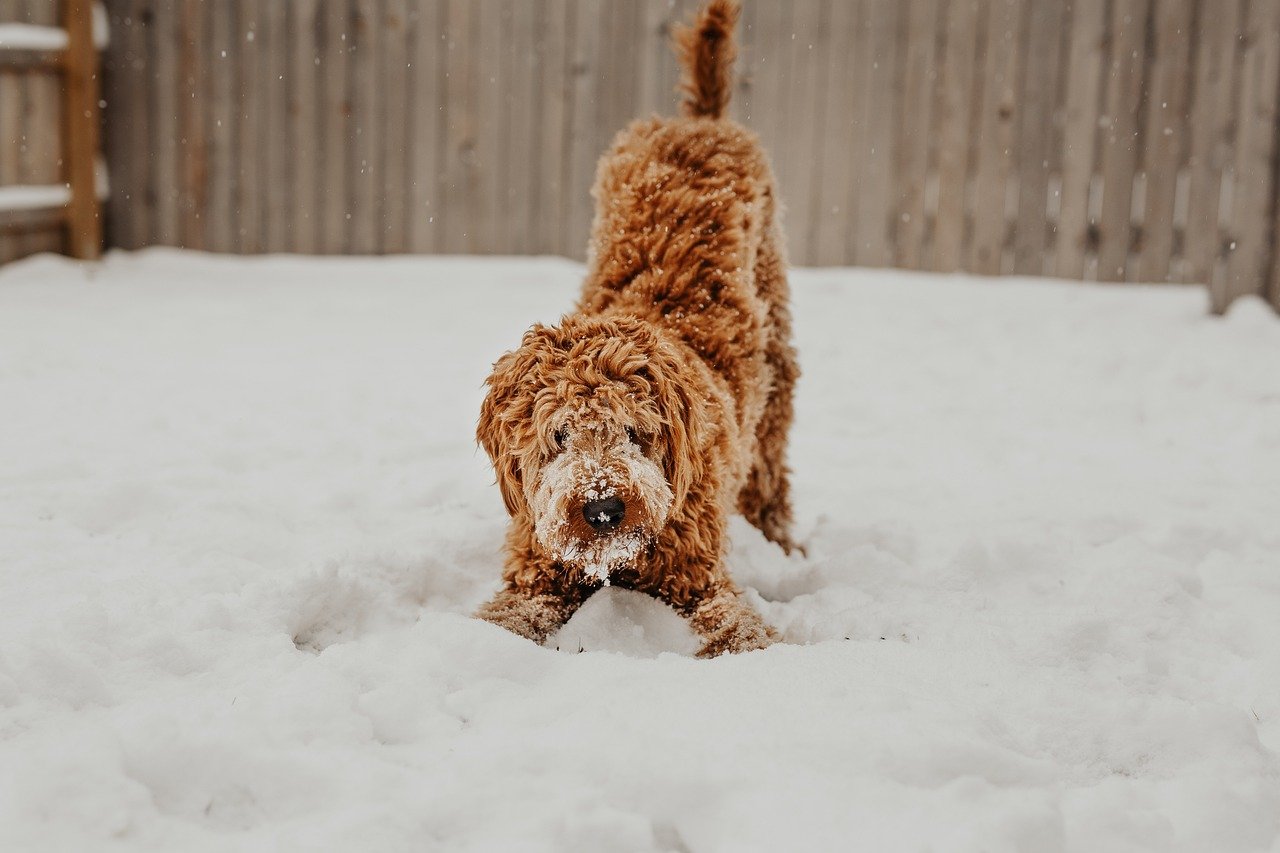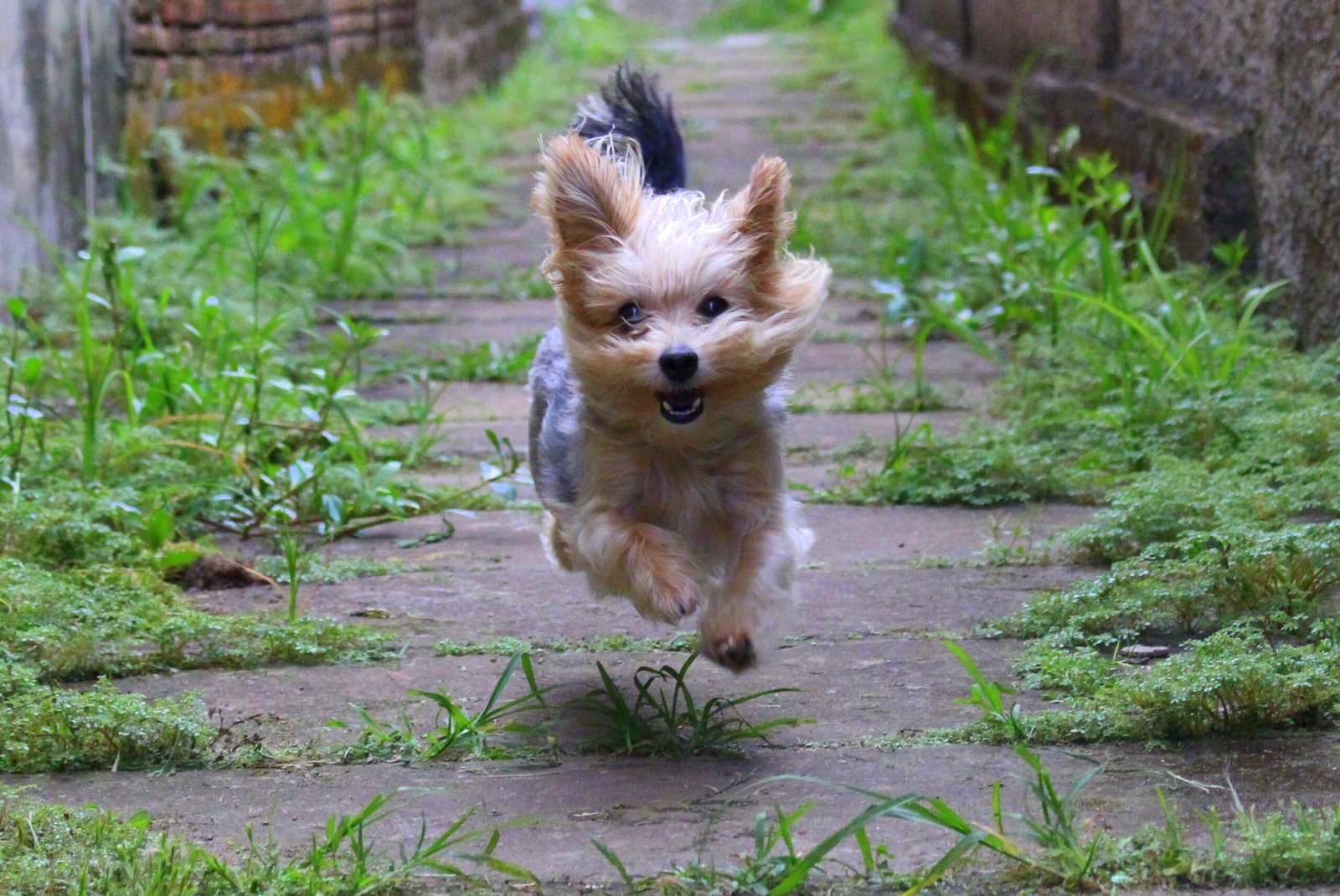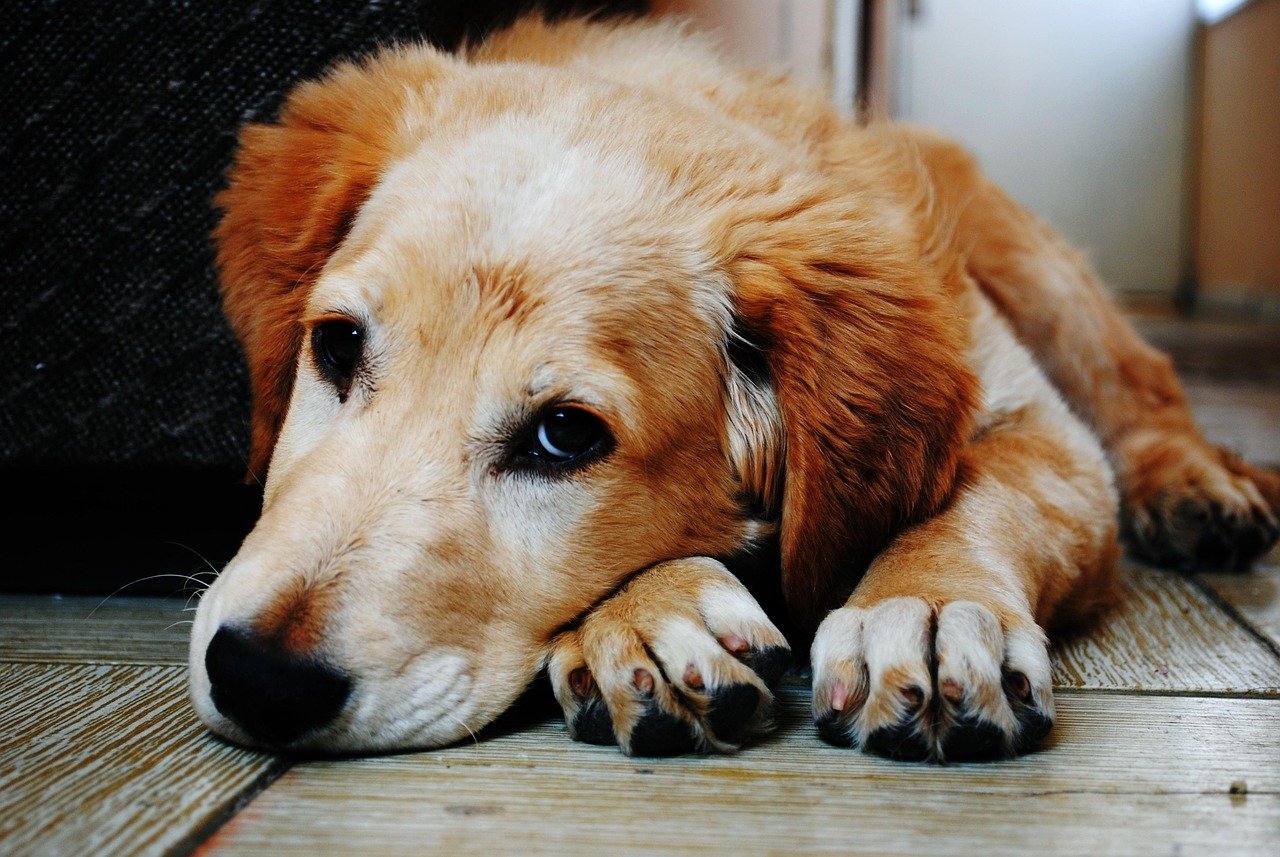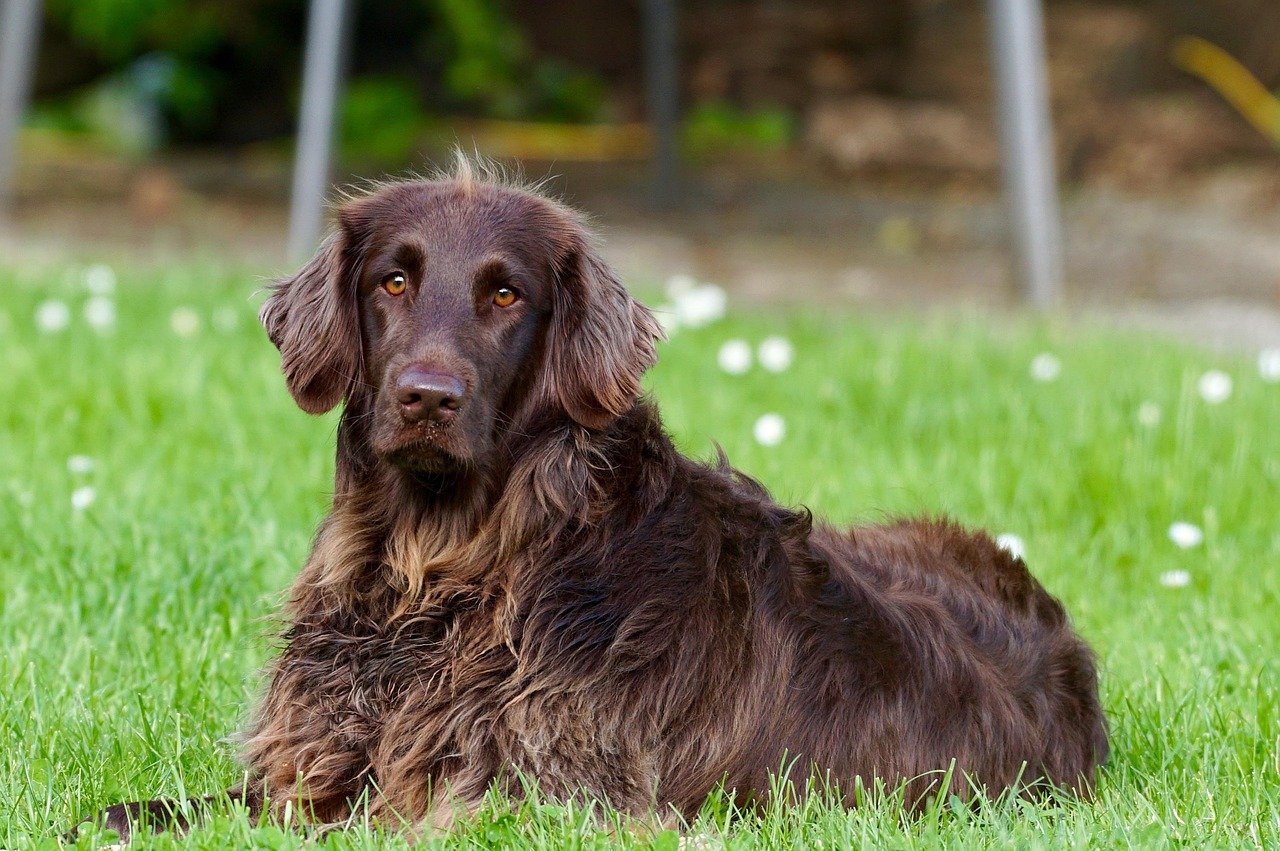Imagine coming home after a long, exhausting day, and your dog greets you with a wagging tail and those sparkling, soulful eyes. But what if your pup is feeling something deeper—something you don’t notice right away? Dogs are emotional creatures, often wearing their hearts on their sleeves (or should we say tails), but sometimes their feelings are tucked away behind tiny gestures or changes in behavior. Are you truly picking up on what your four-legged friend is feeling? This guide pulls back the curtain on ten small but powerful signs—five that reveal pure canine joy, and five that whisper a need for extra love.
1. The Soft, Sighing Stretch: A Secret Happy Dance
You might think your dog’s big, dramatic stretches are just about waking up those sleepy muscles, but there’s more to it. When dogs do a long, slow stretch—front legs forward, rear up, sometimes paired with a gentle sigh—it can be a hidden sign of contentment. It’s their way of telling you, “I feel safe, relaxed, and happy here.” This stretch, especially if it happens right after seeing you or before settling in for a cuddle, signals your dog is brimming with quiet joy.
Unlike the playful bow, which is energetic, this stretch is calm and almost meditative. Think of it as your pup’s version of a deep breath at the end of a good day. If your dog often stretches like this around you, take it as a compliment—they’re enjoying life and your company. It’s a gesture that can go unnoticed if you’re not watching for it, but once you spot it, you’ll start to notice how often your dog expresses their happiness in this subtle way.
2. Gentle Eye Contact: Love Without Words

Dogs can say a million things with their eyes, and a soft, lingering gaze is one of the sweetest signs of happiness. If your dog meets your eyes with a calm, relaxed look—maybe even blinking slowly—they’re showing trust and affection. This isn’t the intense stare dogs use when they want something, but rather a gentle, almost dreamy connection. Studies even suggest that this kind of eye contact can boost oxytocin, the “love hormone,” in both you and your pet.
It’s easy to overlook these moments, especially if you’re busy or distracted. But the next time you catch your dog watching you with those warm, relaxed eyes, know that it’s a silent “I love you.” These quiet interactions build your bond and show that your dog feels happy and safe. It’s a reminder that sometimes, happiness is found in the smallest, softest glances.
3. The Happy Helicopter Tail: Not Just a Wag
Everyone knows dogs wag their tails when they’re happy, but a true sign of overjoyed excitement is what many call the “helicopter tail.” Instead of a side-to-side wag, your dog’s tail spins in a full circle, like a propeller. This isn’t just any tail movement—it’s reserved for the happiest moments, like when you come home after a trip or surprise them with their favorite treat.
This circular wag is a burst of pure, unfiltered happiness. It’s your dog’s way of saying, “I’m so happy I can’t contain myself!” If you spot that spinning tail, especially paired with a wiggling body and prancing feet, you can be sure your dog is absolutely thrilled. Not every dog does it, but when you see it, you’ll never forget how joyful and silly it looks.
4. The Wiggly Whole-Body Wiggle: Uncontainable Joy

When happiness becomes too big for a tail to handle, it spreads through your dog’s whole body. You’ll see it when your dog greets you after a long day or when you grab the leash for a walk. Their body shimmies, their back end wags, and sometimes they almost vibrate with excitement. This full-body wiggle is a classic sign of a dog overflowing with joy.
Some dogs even add a little bounce or hop, making it look like they’re doing a happy dance. It’s hard not to laugh when you see this, and it’s a sure sign your dog is feeling fantastic. If your dog regularly greets you with this much enthusiasm, it’s a testament to the happiness your presence brings them. It’s the canine equivalent of a child jumping up and down because they can’t wait to hug you.
5. The Playful “Zoomies”: Happiness in High Gear

Every dog parent knows the joy (and chaos) of the zoomies. Out of nowhere, your dog tears around the house or yard at top speed, darting back and forth with wild eyes and a goofy grin. These manic bursts of energy are more than just exercise—they’re an explosion of happiness and excitement. Dogs often get the zoomies after playtime, a bath, or when they’re just feeling especially good.
Zoomies are a clear message: “Life is awesome right now!” It’s natural to worry about your furniture or get caught in the crossfire, but this behavior is a wonderful sign your dog is feeling their best. Not every dog gets the zoomies, but when they do, you know they’re celebrating life in the most joyful way possible.
6. Quiet Withdrawal: When Your Dog Slips Away

On the flip side, one of the most subtle signs your dog may be feeling low is a change in their social behavior. If your normally social pup starts spending more time alone—hiding under the bed, retreating to a quiet corner, or avoiding family members—it can be a red flag. Dogs are naturally pack animals, so sudden withdrawal often signals that something isn’t right.
This behavior can easily be mistaken for independence or sleepiness, but it’s important to notice if it’s out of character. If your dog is avoiding interaction, it might be due to sadness, anxiety, or even physical discomfort. Noticing this early gives you a chance to offer comfort or seek help if needed.
7. Subdued Tail: The Hidden Downward Wag

A tail tells the story of your dog’s mood. While a wagging tail usually means happiness, a tail that’s low, tucked, or moving slowly can be a subtle sign of feeling down. This isn’t always easy to spot, especially in breeds with naturally low tails, but paying attention to changes can reveal a lot.
If your dog’s tail seems to droop or stay tucked between their legs more often than usual, it could signal sadness, fear, or discomfort. This change is often paired with other low-energy behaviors, like moving slowly or avoiding eye contact. Even if it’s just a small difference, it’s worth investigating what might be behind your dog’s change in tail language.
8. Excessive Licking or Chewing: Comforting Themselves
You might notice your dog licking their paws or chewing themselves more than usual. While grooming is normal dog behavior, excessive licking or chewing can be an emotional coping mechanism. Dogs sometimes do this when they’re stressed, bored, or feeling low—it’s their way of self-soothing when something isn’t quite right.
This behavior can also indicate pain or irritation, so it’s important to check for physical causes. But if there’s no clear medical issue, excessive grooming can be a subtle sign of emotional distress. Keeping an eye on your dog’s grooming habits helps you catch these quiet cries for help early.
9. Loss of Interest in Play: When Fun Isn’t Fun Anymore
A dog’s love for play is almost legendary, so when your pup starts ignoring their favorite toys or turning down games, it’s a sign worth paying attention to. Dogs that are sad, anxious, or not feeling well often lose interest in activities they usually adore. This change can creep in slowly, so it’s easy to overlook.
If your dog suddenly seems uninterested in fetching, tug-of-war, or even their beloved squeaky toy, it might be their way of saying, “I’m not feeling myself.” This loss of enthusiasm can be a sign of emotional or physical trouble and deserves a closer look to ensure your dog’s well-being.
10. Subtle Changes in Appetite: The Quiet Cry for Help
Changes in eating habits are one of the most overlooked but telling signs that your dog might be feeling low. Some dogs eat less when they’re sad or stressed, while others might eat more out of boredom or anxiety. This shift can be gradual—maybe leaving a little food behind, or suddenly refusing treats they used to love.
Appetite changes are easy to dismiss, but they often reflect deeper emotional or physical issues. Keeping an eye on how much and how eagerly your dog eats can help you catch early warning signs of unhappiness or illness. Noticing these subtle shifts gives you a chance to act before small problems become bigger ones.
Dogs are masters of subtle communication, and learning to read their body language can reveal a lot about their emotional state. The five hidden signs of joy—like soft eyes, playful bounces, and relaxed posture—show just how deeply they feel happiness in your presence. On the flip side, the subtle signs of sadness, such as lowered tails or loss of interest, are quiet cries for attention and care. By tuning into both the highs and lows, you not only become a more attentive dog owner—you become the source of comfort, joy, and stability your dog depends on every single day.

Linnea is a born and bred Swede but spends as much time as possible in Cape Town, South Africa. This is mainly due to Cape Town’s extraordinary scenery, wildlife, and atmosphere (in other words, because Cape Town is heaven on earth.) That being said, Sweden’s majestic forests forever hold a special place in her heart. Linnea spends as much time as she can close to the ocean collecting sea shells or in the park admiring puppies.






